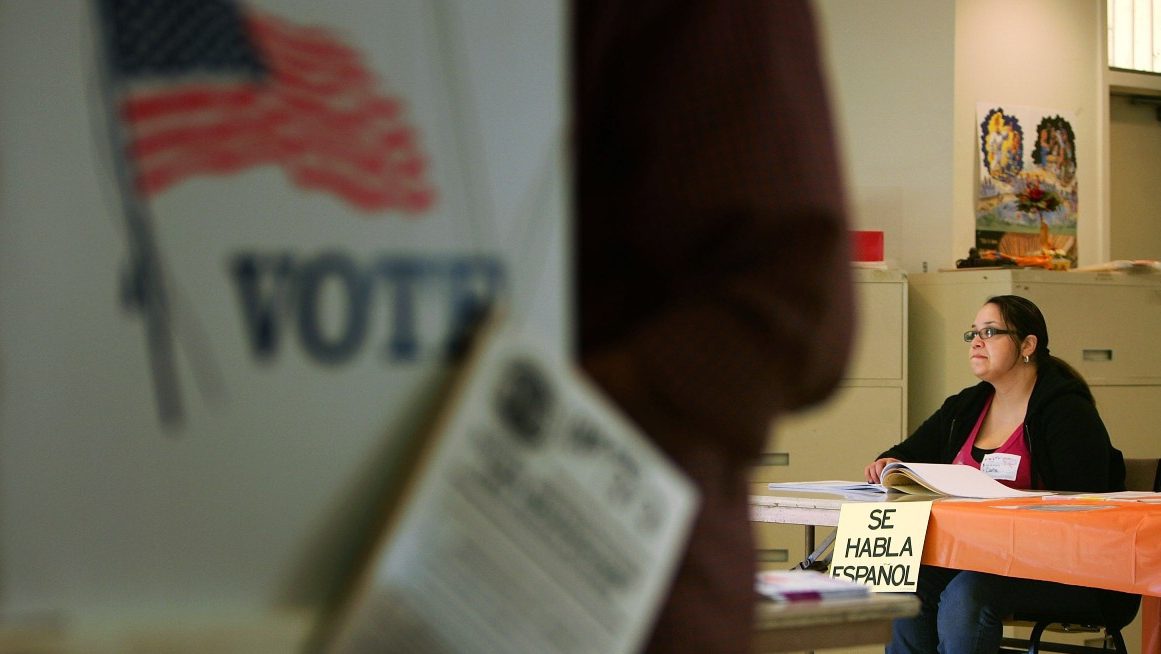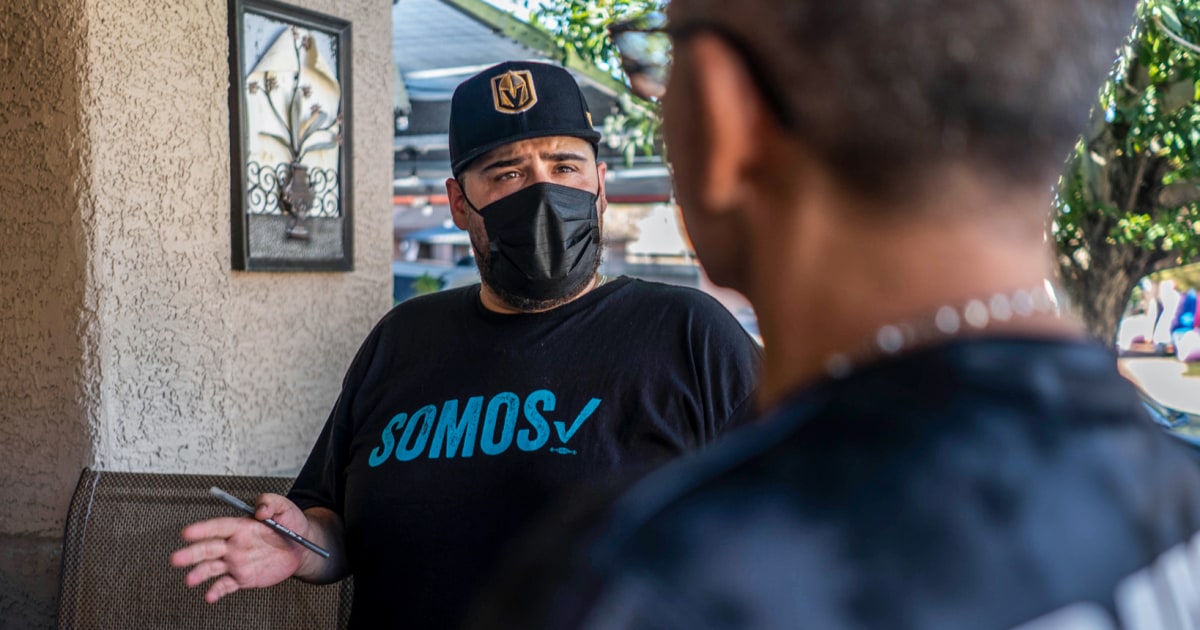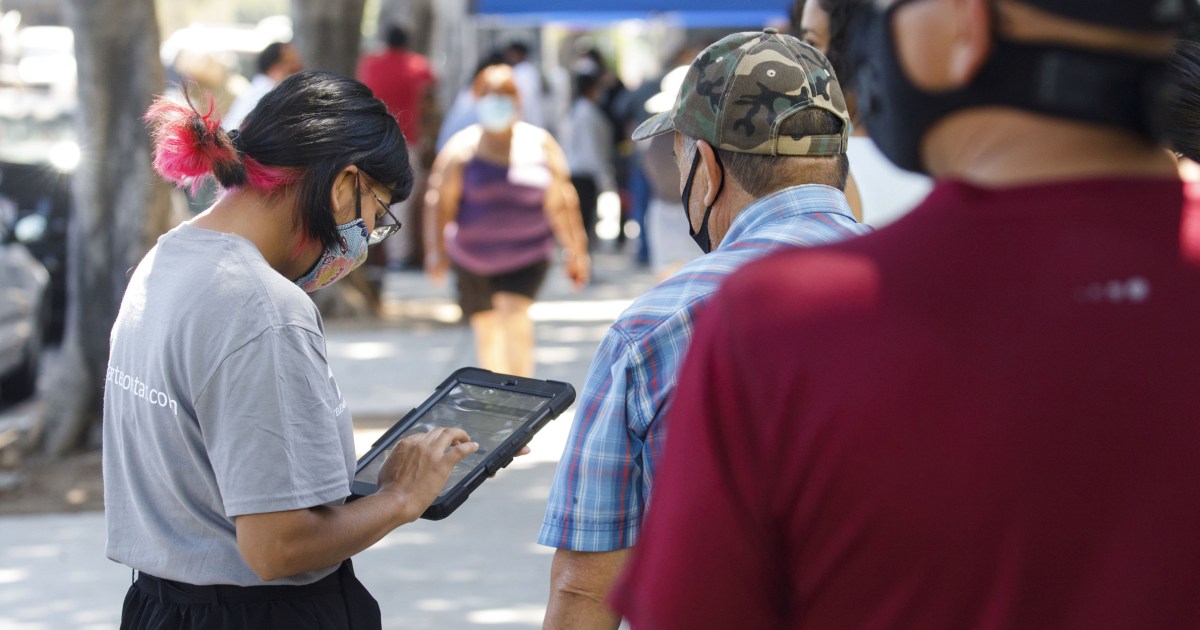How does the Latino vote in the US get to the 2022 midterm elections?
3:25
(CNN Spanish) --
Latinos in the United States are a very diverse population but, politically speaking, they used to lean Democratic, electoral records and Pew Research Center polls show.
Over time, the trend has been changing and various surveys show that now the advantage of the Democrats is diminishing among Latino voters... not only that, but they are less and less Democrats or more Republicans.
According to analysts, this is explained by the fact that it is a very diverse group: economically, culturally and in its ethnic and national origins.
This trend, says Professor Justin Gest, may have less to do with how Latinos see political parties in the United States and more to do with how new generations of Latinos see themselves.
Immigration is one of the main issues among Latino voters weeks before the elections
"The idea of unity, Latino unity, is not accepted by all Latinos," says Sergio García-Ríos, a political scientist at Cornell University and director of polls for Univisión.
"People have multiple identities... (And) we're starting to see a lot more of the latest generation of Latinos, who are further and further away from an immigrant arrival."
It has been 10 years since the 2012 presidential election in which Barack Obama won the highest percentage of the national vote among Latinos since 1996 seen by a Democratic candidate, according to polls.
What has happened since then?
While polls show most Latinos siding with Democrats on a variety of issues, the Republican Party has made significant gains in recent years, even as it ramps up its anti-immigrant rhetoric popularized by former President Donald Trump.
advertising
Facing the midterm elections that will redefine the control of the Republican and Democratic parties in Congress, we review how Latinos have voted in the last 10 years.
This is revealed by the polls.
The Latino vote was key in Obama's victory in 2012
In 2012, when Barack Obama was seeking reelection for a second term, Latinos represented 10% of the electorate — up from 9% in 2008 — and they turned out to be a key group for his victory.
71% of Latino voters chose Obama over the 27% who chose Republican candidate Matt Romney, according to an analysis of exit polls by the Pew Hispanic Center, a project of the Pew Research Center.
In that election, the percentage of national votes for the Democratic candidate among Latino voters was the highest seen since 1996, when President Bill Clinton obtained 72% of the Latino vote.
The Hispanic vote was decisive in the key battleground states for Obama to secure a second term.
In Colorado, the Democrat obtained 75% of the votes of this group of the electorate against 23% for the Republican.
There, the Latino population eligible to vote represented 14% of Colorado voters that year, up from 13% in 2008, according to the Pew Hispanic Center.
They also decided in Nevada, with 70% support for Obama versus 25% for Romney.
In Florida, Obama led among Latinos with 60% (Romney got 39%).
The popularity of the Democrat among the Hispanic community was then attributed to the growth of Puerto Ricans in the center of the state, considering that Cubans tend to vote for the Republican Party.
Of all Latinos in Florida, 34% are Cuban and 57% are non-Cuban, according to data from the Pew Hispanic Center.
Trump's anti-immigrant rhetoric fell short in 2016
For the 2016 presidential elections, a significant number of Latinos were expected to vote against Donald Trump's candidacy considering his harsh anti-immigrant rhetoric, including his threats to build a wall on the border with Mexico and the derogatory labels used to referred to this group as "murderers and rapists".
Is Donald Trump racist?
10 sentences to analyze it
However, this did not happen that way and the support for Democratic candidate Hillary Clinton was not significant; on the contrary, she won the Latino vote but did so well below what Obama had achieved four years earlier.
Clinton won 66% of Latino voters, according to the Pew Research Center poll, compared to 71% for Obama.
Meanwhile, 28% of Latinos voted for Trump, a figure similar to that of 2012, when Republican Romney won with 27%.
What did occur was a historic increase in Latino voter turnout across the country.
According to polls, about 11% of the Latino electorate voted in November 2016, compared to 10% in 2012. Not only that, it also grew in many states, including those considered battlegrounds: Arizona, Florida and Nevada.
What happened to the Latino vote in the 2018 midterms?
In the 2018 midterm elections, the Latino voting population made up 12.8% of all voters in the United States, a powerful force in American politics.
About half (48%) of Latino registered voters said the Democratic Party cares more about Latinos than the Republican Party.
Meanwhile, about a third (32%) said there is no difference between the parties, and only 14% believed the GOP was more of a concern, according to Pew Research data.
These are the 6 states to watch in the US midterms.
In U.S. congressional races across the country, roughly 69% of Latinos voted for the Democratic candidate and 29% backed the Republican candidate, a more than two-to-one advantage for Democrats, according to Pew exit poll data.
In those intermediate elections, the Democratic Party regained control of the House of Representatives.
A record 40% of the Hispanic population eligible to vote turned out to vote in 2018. That was an increase of about 50% from 2014, which was about double the increase seen among non-Hispanic white Americans.
More Latinos Supported Trump in 2020
Trump and his proximity to the Latino community 2:24
Although he lost the 2020 presidential election, Donald Trump gained ground among Latino voters in several key states from those he won in 2016. The Republican obtained 32% of the Latino vote, that is, 4 percentage points more (28%) than four years before.
A 2020 CNN exit poll nationwide showed that Biden captured 66% of the pack nationwide, which is the same Democratic nominee Hillary Clinton received four years earlier.
In 2020, Democrats targeted Texas, believing the pace of demographic change was working in their favor.
As in much of the American Southwest, an aging white working-class population was giving way to urban professionals and minorities with an immigrant background, key constituents of the Democratic coalition.
More Latino voters support Trump in 2020 than in 2016, but young Americans favor Biden, early CNN exit polls show
But after Hillary Clinton won Zapata County, along the Mexican border, by almost 33 points in 2016, she turned Republican in 2020. In Texas, Trump won 41% of the Latino vote, again putting him helped win state.
And in Florida, the Republican won 46% of the Latino vote, a performance that allowed him to win the state more easily than expected.
Both Trump and Biden benefited from the high turnout of Latino voters in the country.
However, the support they received from this electorate of around 32 million people was diverse and complex.
"If you think of us as natural Democrats or natural Republicans, you're underestimating us as political thinkers," Geraldo Cadava, who teaches at Northwestern University and is the author of "The Hispanic Republican: The Shaping of an American Political Identity, from Nixon to Trump.”
Hispanics are more decisive, but now they are more indecisive
After giving Democratic House candidates more than 60% of their vote in 2020, Latinos are moving even further to the right: A recent
Wall Street Journal
poll found Latino voters evenly split between the two parties in their options for Congress in 2022, with 22% still undecided.
This year, Latinos are likely to play a larger role than ever in determining whether the Democratic or Republican Party coalition is larger.
Hispanic voters (11%) accounted for more voters in 2020 than in any previous national election, according to the US Census Bureau. Also, that Hispanic voters made up a larger share in the 2018 midterm elections (9%) than any other prior intermediate election.
In 2018, Hispanics represented the same percentage of voters as in the previous presidential elections.
If that is the case this year, then the Hispanic share of the electorate in 2022 will be the highest for a midterm election.
Harry Enten, Nicole Chavez, Cindy Y. Rodriguez, CNN's Chris Cillizza contributed to this report. With information from Carlos A. Montaner.
midterm elections Latino Vote















